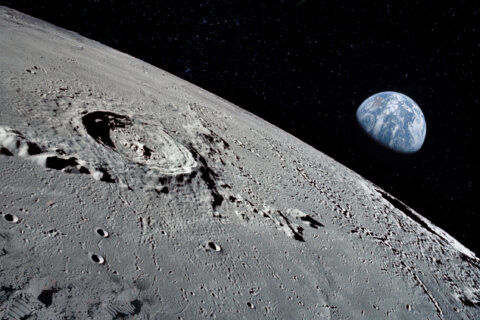WASHINGTON — If Jordan Peele proved anything with “Get Out” (2017), it’s that our greatest comedic minds can just as easily scare the crap out of us when they put their minds to it.
Enter John Krasinski, who made us laugh for years as Jim Halpert, pranking Dwight Schrute, pestering Michael Scott and romancing Pam Beesley on NBC’s smash sitcom “The Office.”
This weekend, Krasinski switches tones to direct the new horror flick “A Quiet Place,” a genius creature feature with a silent-but-deadly premise that is destined to become an instant classic. Like “Get Out,” it’s so masterfully crafted that it will wow even non-fans of the genre.
Set in the dystopian near future, survivalist Lee Abbott (John Krasinski) and wife Evelyn (Emily Blunt) raise their kids during a global lockdown caused by blind monsters that hunt their prey via sonar. If you make the slightest sound, these creatures will charge and dismember you before you even have time to gasp. Can the family — and mankind — find a way to survive?
Co-written by Bryan Woods, Scott Beck and Krasinski, the silent premise is utterly refreshing, blowing “Don’t Breathe” (2016) out of the water by continually introducing new elements rather than becoming repetitive. It’s fascinating watching all of the ways that the gimmick manifests itself as the family uses sign language to communicate, pours paths of sand to walk on, taps out S.O.S. messages in Morse code, and sets rooftop fires to signal the neighbors.
Underneath it all is a compelling story of family grief, guilt and blame between the parents and their kids, played with terrific child performances by Noah Jupe (“Wonder”) and Millicent Simmonds (“Wonderstruck”). The latter is deaf in real life and on screen, blaming herself for the death of brother Beau (Cade Woodward) and doubting her father’s love as a result.
Anchoring the family drama are Krasinski and Blunt, who pull a palpable authenticity from their real-life marriage. In one particular scene, Krasinski uses sign language to tell a pregnant Blunt that she looks amazing. Blunt answers by puffing out her cheeks to joke that she looks bloated. The two smile at one another and proceed to slow dance to a pair of iPod earbuds.
While the two leads mine adorable chemistry, it’s Blunt who steals the show in a breathtaking pregnancy scene where her water breaks at the precise moment that the creatures enter the farmhouse. Covering her mouth and biting her hand in pain, she desperately tries to hold in a baby that will certainly cry with natural newborn wails, thus inviting the monsters to attack.
It’s just one of many moments where we the audience actively engage in a chess match with the filmmaker, trying to guess the next crunch, snap or buzz sound that might alert the creatures. You’ll want to yell at the screen, but you’ll be too busy holding your breath and gritting your teeth, afraid to make a sound in the theater, which becomes its own “quiet place.” As you can imagine, this makes the intermittent jumpscares even more explosive.
Who knew Krasinski had such chops? After directing the under-the-radar dramedies “Brief Interviews with Hideous Men” (2009) and “The Hollars” (2016), no one could have predicted such a master class of tension. Virtually a silent film for 90 minutes, Krasinski must employ the lost art of visual storytelling, showing us glimpses of newspaper headlines and revealing Blunt’s pregnancy in slow disclosure as she climbs a step stool and her belly enters the frame.
When it comes time for the chaos, the attacks are the most terrifying since Steven Spielberg’s T-Rex in “Jurassic Park” (1993), unfolding in a rural setting like M. Night Shyamalan’s “Signs” (2002) with the best use of a silo since “Witness” (1985). These creepy corn fields are captured by cinematographer Charlotte Bruus Christensen (“The Girl on the Train”), editor Christopher Tellefsen (“Moneyball”) and production designer Jeffrey Beecroft (“Dances with Wolves”), all backed by composer Marco Beltrami (“World War Z”), who must carry us without dialogue.
Of course, none of it would work without the special effects of the monsters, which look like a mix of giant insects and alien creatures, complete with giant ears listening for their next victims. Make no mistake: this is a creature feature, so you are going to see glimpses of CGI beasts. If that’s not your thing, you might argue we see a little too much of the monsters, but that’s more a matter of taste. I defy any haters to make a better monster movie. You can’t.
If you’re still on the fence, the finale will win you over, cutting to the end credits at just the right moment. As the phrase “Directed by John Krasinski” comes onto the screen, you’ll want to stand up and clap, save for the fear that your cheers might suddenly get you snatched.
If “Get Out” proved why we should still “get out” to the theater during our streaming era, “A Quiet Place” proves the thrill of sitting quiet in an audience holding our collective breath.









